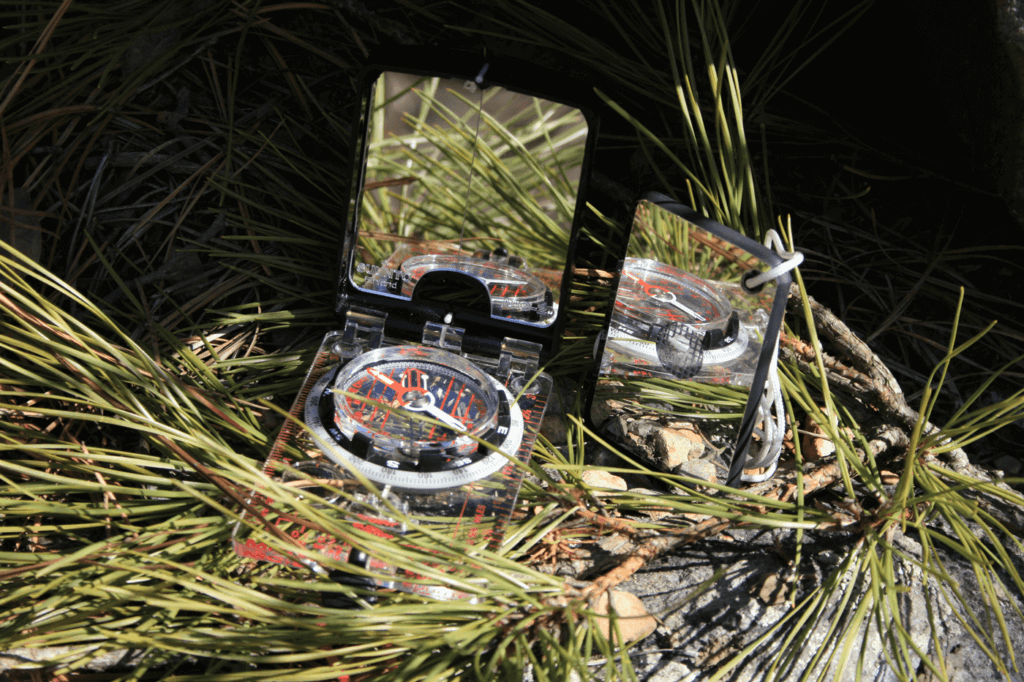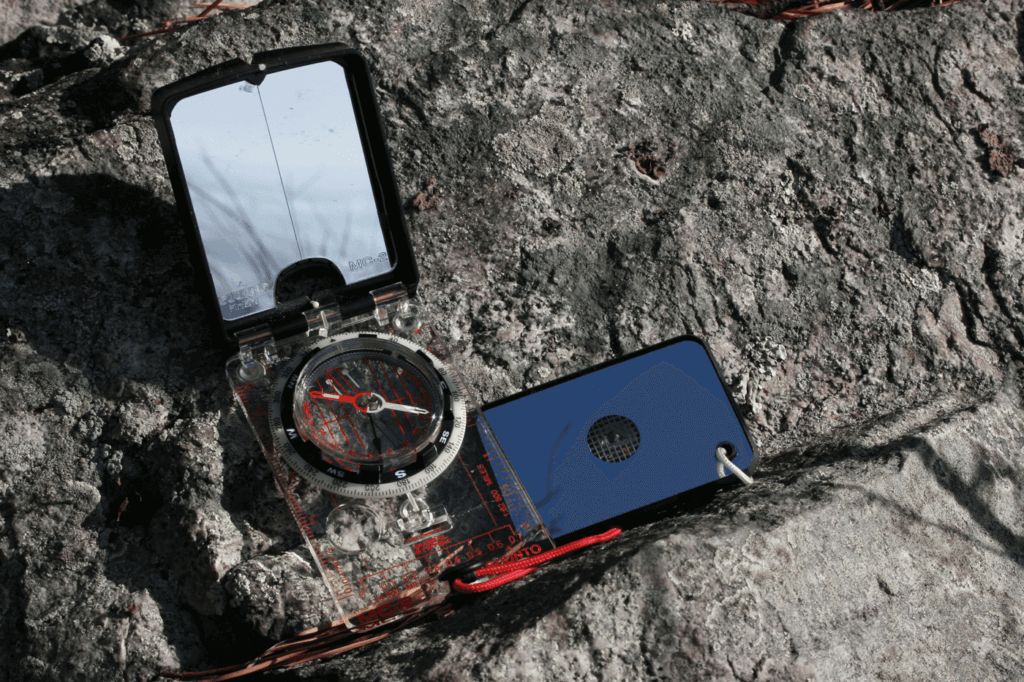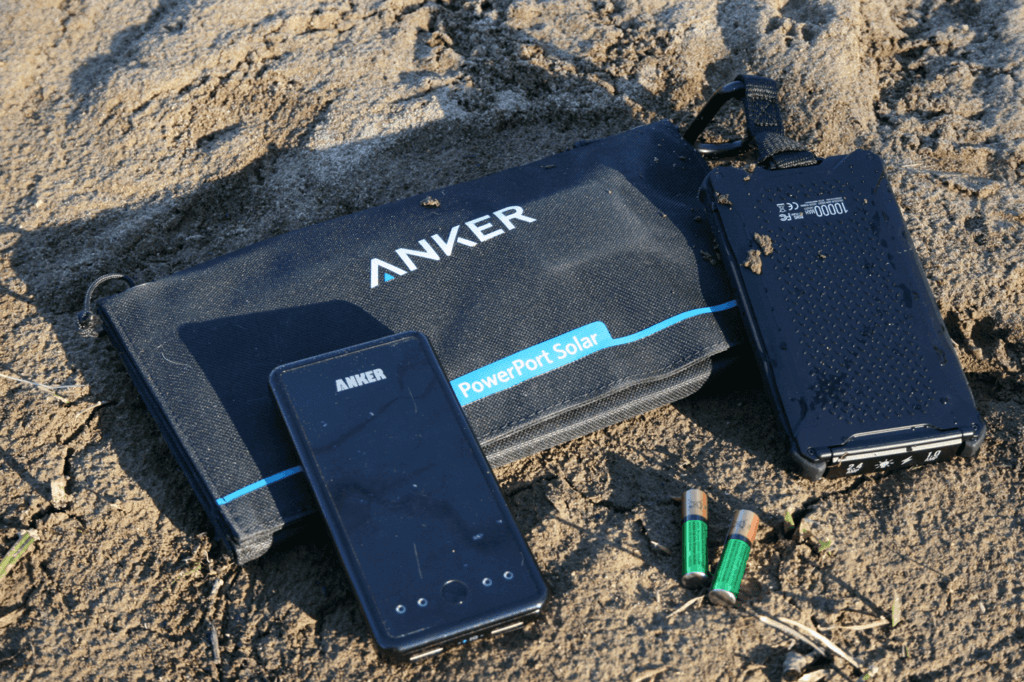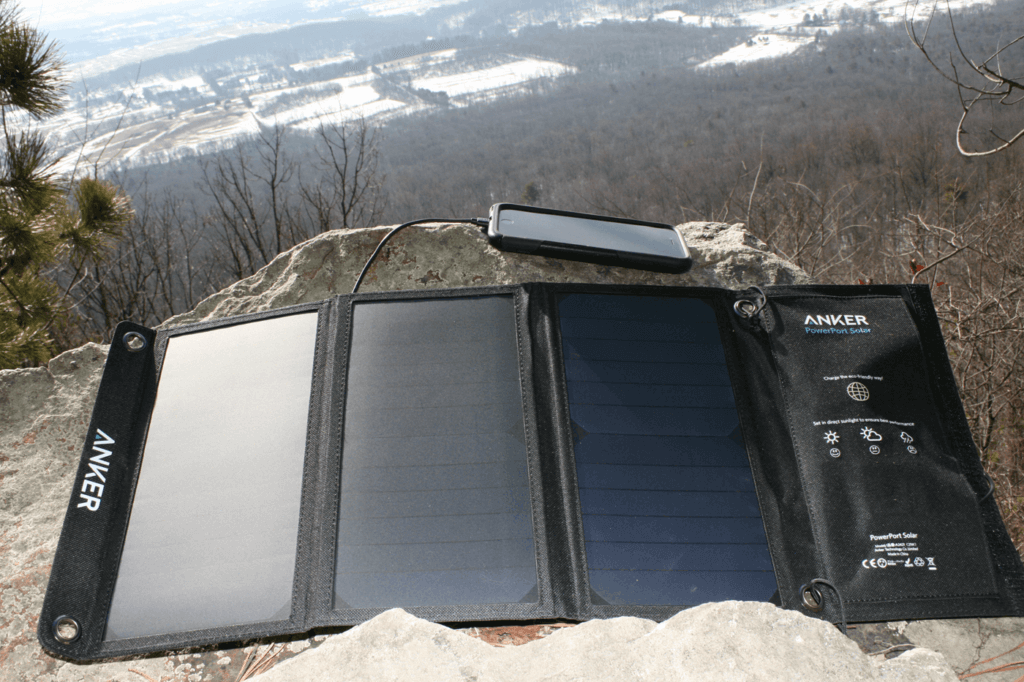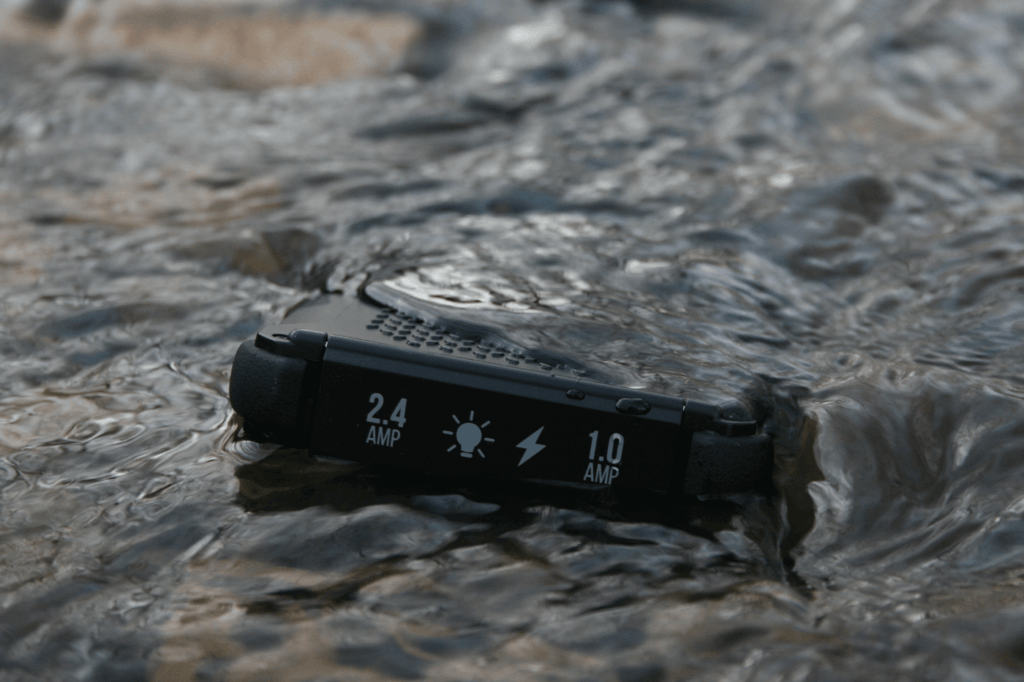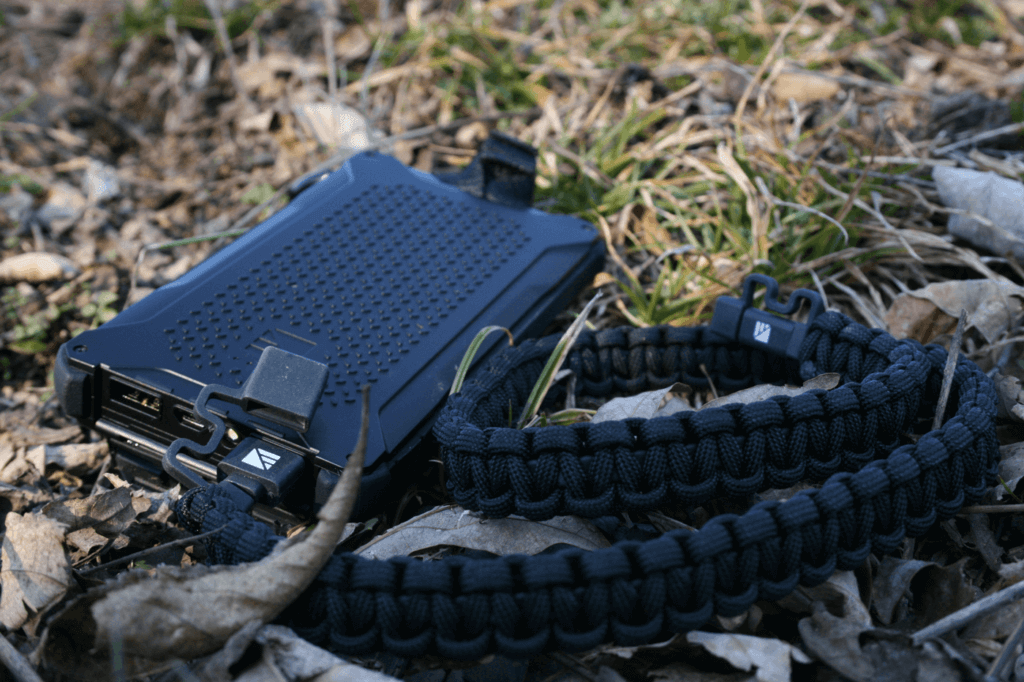Signaling is an activity that we do in our everyday lives and is something that most of us take for granted. Whether it be through a simple conversation with a friend, sending a text, email or using the turn indicator on your car, it is something we do without ever thinking about it.
What happens when our everyday methods of signaling are no longer adequate? You may find yourself in a remote area where your cell phone has limited or no coverage. Natural disasters and other emergency situations can render our traditional lines of communication useless. It is during these times when a little knowledge, planning and practice can go a long way.
Signal Types
There are two main methods of signaling, visual signals and audible signals. We can also consider electronic signaling as a third sub category.
Visual signals
When dealing with visual signaling techniques, contrast and movement are your friends. While you definitely need to consider your environment when creating contrast there are a few things that you can do to stack the deck in your favor.
Whenever possible, choose high, open ground to employ your signaling device. A perfectly constructed signal fire placed in a tree-covered depression won’t be nearly as effective as one placed on a barren hilltop. Survey the area you find yourself in and choose the location that is most visible from your surroundings. 
The type of visual signaling device you choose to use will be dictated by your environment and resources. Let’s discuss a few options that you can employ when choosing to use a visual signaling device. Remember the rule of three when using any sort of signaling technique. Three of any type of signal is an internationally recognized sign of distress.
Consider this: A pilot flying overhead or a hiker on a distant hilltop who sees a single fire or column of smoke could easily dismiss it as a campfire. Seeing three separate fires or three columns of smoke will, at the very least, arouse the curiosity of someone uneducated in distress signals while giving a clear indication to those who are educated that someone needs help.
Signal fire
The signal fire can be highly effective, but requires extensive resources and proper placement to reach its full potential. You will need enough fuel to create three fires large and bright enough to be seen from a distance. Placing the fires in a prominent open area will maximize their potential for being seen. Your surroundings must be taken into consideration to minimize the risk of losing control of the fires, thereby creating a hazardous situation. Gather as much fuel as you can before you need to light the fires. You don’t want to be searching for fuel when potential rescue is close at hand.
Smoke generator
When using smoke as a signaling device you will need to have relatively calm, clear weather. High winds, rain, fog and snow can all act to disperse and disguise smoke. Smoke needs to contrast with its environment to be most visible. White smoke can be generated by building up a fire and burning wet leaves and green vegetation while black smoke can be generated by burning plastics, rubber, oil and other petroleum products. Remember, one column of smoke may be seen as a campfire, three columns of smoke act as a distress signal.
Signal mirror
While a dedicated signal mirror will serve you best, a compass mirror may also be used in an emergency.
The signal mirror is a time-tested signaling device that is easy to carry and requires only sunlight to use. The military Mk-3 signal mirror has been in use since WW2, but the use of a highly reflective polished surface goes back to the era when man first started to work with metals. There are many different commercial signal mirrors on the market, but the most effective are those made of glass. While they are more susceptible to being scratched or broken, they are also much brighter than their acrylic counterparts.
If you choose to include a signal mirror in your kit, you are well-advised to practice with it now, before you need it. Signaling devices can also be improvised from flashlight reflectors, mirrors found on automobiles, in homes and businesses, as well as by polishing metal objects. Use your imagination!
Signal panel
Signal panels are nothing more than brightly colored pieces of cloth that are traditionally used for signaling aircraft. Blaze orange is usually the color of choice, though other bright colors that provide a high level of contrast with the environment can be effective as well. The military still lists the VS-17 Signal Panel in its inventory. The original VS-17 panel is available for purchase, as are a number of commercially available variations like those from The Hidden Woodsman.
Signal panels can be improvised from sheets and clothing. You are limited only by your imagination and resources. Just remember, your chosen material must contrast with its surroundings to be most effective.
While the military signal panel was designed to be spotted from aircraft, don’t limit yourself to this application. A signal panel that is prominently placed and hung so that it can move in the wind can be spotted from relatively long distances.

Flashlights
The modern day flashlight has come a long way since the days of the old Mini Maglite. Today’s flashlights, using modern LED technology, are smaller and more efficient than ever before while still producing levels of light that were unheard of “back in the day.” A light that will fit in your pocket while still producing upwards of 1,000 lumens with a long run time is quite common. Companies such as Surefire, Streamlight, ThruNite, Fenix and Olight (to name but a few) all produce a wide variety of flashlights to fit whatever size and budget requirements you might have. Many of these lights are weatherproof and have strobe and preprogrammed SOS features already built in. They make ideal signaling devices.
The main downfall of the flashlight is its reliance on batteries, therefore it’s always a good idea to keep an extra set close at hand. If you carry a smartphone in your pocket, you are also carrying a flashlight. The camera flash on most smartphones might not have the same output as a dedicated light but they are still extremely bright and highly visible. There are also apps available that will allow you to have more precise control over your smartphone camera flash, many of which include dedicated signaling options.

Audible signaling devices, for the most part, are relatively short range devices, with the exception of phones and radios. These device types are used to attract the attention of people within hearing range. The louder the device, the longer the effective range.
Signal whistle
Whistles come in all shapes and sizes. Typically, the simpler designs with no moving parts are the most favorable. Whistles like those used for sporting events can be very effective but can also be prone to freezing in cold weather. Some backpacks have whistles built into the buckles of their sternum straps. Leatherman now has a whistle incorporated into their dedicated survival multi-tool, the Signal.
While these small whistles are better than nothing, a larger whistle dedicated to signaling will usually be much louder, allowing the sound to carry greater distances. Whatever whistle you choose, there are a few simple things to remember when employing them. Three consecutive whistle blasts is the international signal of distress. If possible, each whistle blast should last three seconds. An SOS signal of three short blasts followed by three long blasts and finally three short blasts may also be effective.

Firearms
Firearms can also be an effective signaling device. Though crude, they are quite loud and the sound of a gunshot can travel great distances. As with the whistle, three consecutive gunshots act as an international signal for distress. Obviously, you must take safety into consideration when choosing to fire live ammunition.
One of the downsides to using a gunshot as a signal is that they can be mistaken for a sloppy hunter. During open hunting seasons, three consecutive gunshots may not provide enough auditory contrast to attract the desired attention. Prepare to couple this technique with another technique to maximize your chances for success.

Cellphones
The modern day smartphone can be considered an electronic multi-tool. There are countless ways to use a smartphone for survival purposes, but the most obvious is as a phone. Simply being able to dial 911 or call a friend or relative is reason enough to have a cell phone (smartphone or regular phone) in your kit. Of course, cell phones require battery power to operate so you must be careful to conserve the power that you have. It is advisable to have a way to recharge your phone if it goes dead. They also require a cellular signal which is not always available in the backcountry. In places where cellular service is spotty, climbing to the highest available point in your area can help maximize your chances of getting a signal. All modern day cell phones are required to be able to connect to 911 emergency services, whether they have an active service plan or not. As long as the phone has power and a signal you should be able to use it to dial 911.
Prior to calling 911 take a moment or two to assess your situation. Have as many details as you can think of ready to relay to the person you are calling. If you have limited signal or battery power, you want to be able to relay as much information as you can as quickly and clearly as possible. The middle of a phone call is not the time to be searching for needed information. Remember that while 911 operators are trained to be able get all necessary and important information from you, a friend or relative may not know what questions to ask. Be ready to relay best known location, medical issues, hazardous situations and exactly what kind of help you need. No matter who you are talking with, remain calm and speak clearly. Speak loudly enough to be heard but avoid yelling. Yelling into a phone will only make it more difficult for someone to understand you.
Radios
There are many different commercially available radios on the market. Whether you are using a simple child’s walkie-talkie or one of the high-tech multi-band units carried by emergency services personnel and the military, the protocols for using two-way radios are the same. Most of these units require the operator to press and hold a button while speaking in order to transmit a signal. It is vitally important when using this type of radio that you press the transmit button, wait for a second to allow the radio to connect, then speak while continuing to hold the button until after you are done speaking. A common error for inexperienced users of two-way radios is to begin speaking before they have pressed the transmit button. This is called “clipping the signal” and it makes it very difficult for those on the receiving end of the transmission to understand what you have said. When speaking, use plain language. Avoid using things like “10” codes and acronyms and try to keep things as simple and easy to understand as possible.
As with the cell phone, choosing the highest terrain feature possible will maximize your chance of completing a transmission. Have as much information as you can ready to go before making your transmission and remember to stay calm and speak clearly and loudly enough to be heard without yelling. Keep the microphone a few inches from your mouth. Having the microphone pressed up to your mouth is called “eating the mic” and will, more times than not, cause your transmission to be distorted and difficult to understand.
Many of the radios carried by emergency services personnel have a dedicated “emergency” button. These are typically a prominently placed red or orange button either on the radio or the microphone. Should you find yourself in the position of having to try to summon help for an incapacitated emergency services worker, the array of features on their handheld radios can be quite confusing. Simply pushing the emergency button should set into motion a rapid response. You can then follow up with a phone call or radio transmission to provide details to those responding.

Satellite tracking devices
If you are planning a trip into a remote area where you know cell phones won’t work, you may want to consider one of the satellite tracking devices that are currently available. Companies like ACR, Delorme, and SPOT all offer products that communicate using satellite signals rather than cellular signals. This means that these items will work globally anywhere you have a clear view of the sky. These products range in ability from being able to send a simple SOS signal with coordinates to being able to send short messages and detailed tracking information.
PLAN AHEAD, SIGNAL LATER
Whatever type of signaling method you intend to use, proper preparation and a good understanding of what you are trying to do is key to successful communication. Learn how to use your equipment before you need it and practice all your signaling techniques before you need to rely on them. Leave word with friends or
family about where you are going, when you are leaving and when you should be back.
Discuss guidelines and make plans with your friends and family in the event of a domestic emergency. This can act as your first line of signaling should one of you deviate from those plans. Following these simple procedures can mean the difference between getting the help you need when you need it and a prolonged stay in a highly unpleasant situation.
- Rule of 3: Three visual or audible signals are an international sign of distress.
- Signal as much as you can without exhausting yourself.
- When dealing with visual signals, the more contrast you have with your environment and the more movement you can induce into your signaling device the better.
- When employing electronic signaling devices such as cell phones and flashlights, carry a backup power source such as spare a battery or a portable charger.
- Learn how to use your equipment and practice a variety of signaling techniques before you need them.
- Use the terrain to your advantage to maximize your chances of being seen and heard. As a general rule, the higher you are with the most open terrain you can find the better your chances of being seen and heard.
- Whenever possible, use more than one type of signaling technique. Remember, two is one, one is none.
- Test your equipment before you include it in your kit. An emergency situation is no time to find out that your chosen piece of gear doesn’t work.
- Have backup signaling options available. If your first attempt fails, try something else. Never give up!
- Think outside the box. When preparing to start signaling, think not from your own perspective, but from the perspective of potential observers.
- Don’t be afraid to employ unconventional techniques if you think they have a chance of succeeding and won’t place you in greater danger.
Editor’s note: A version of this article first appeared in the How To special issue of American Survival Guide.



